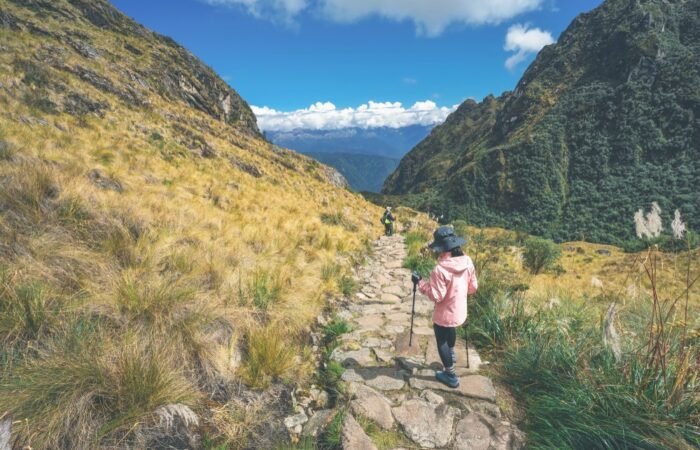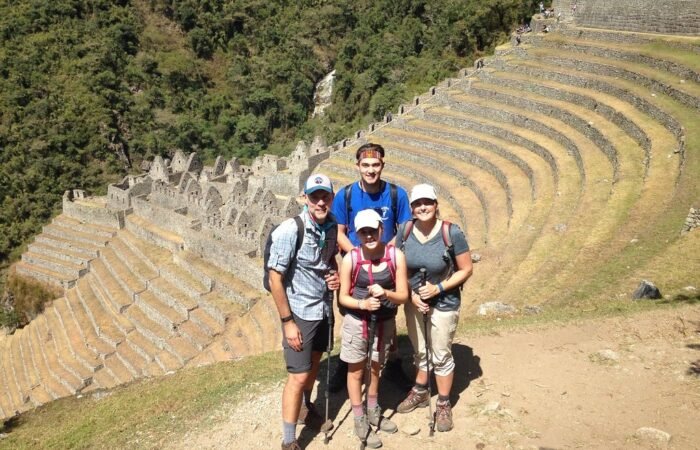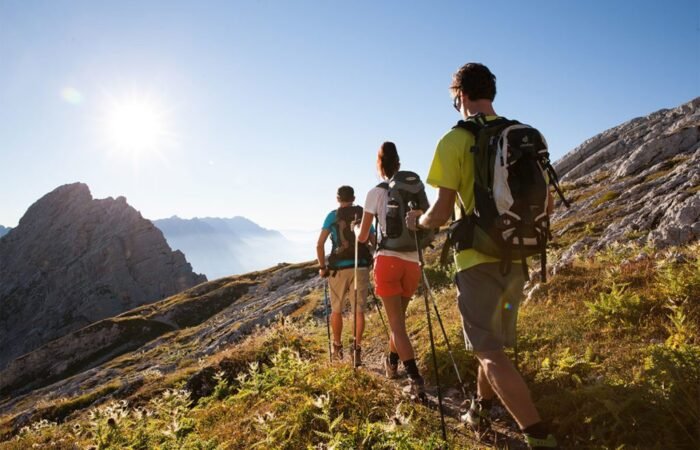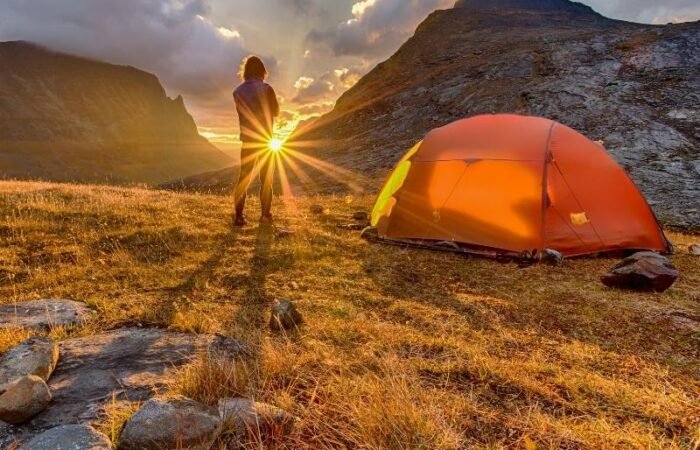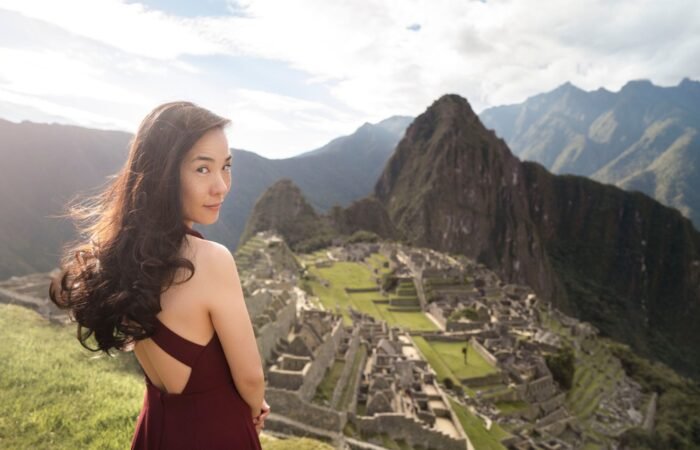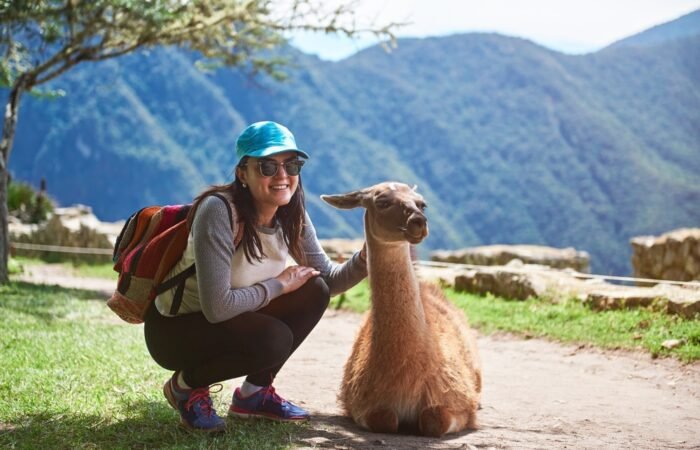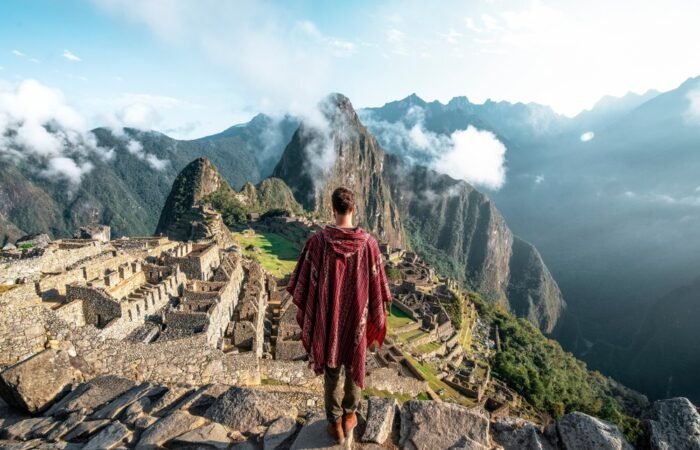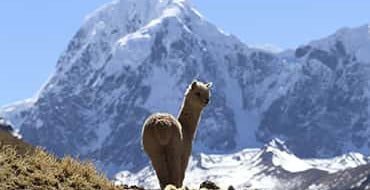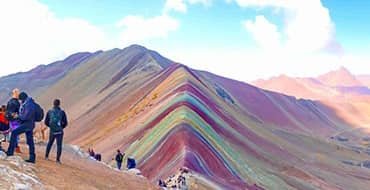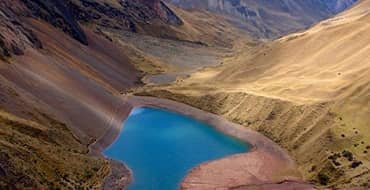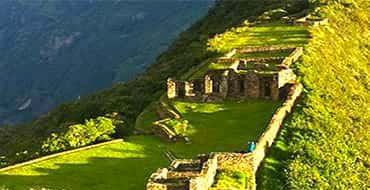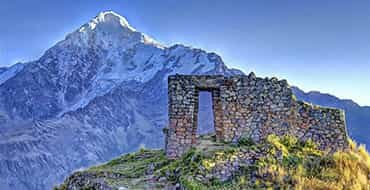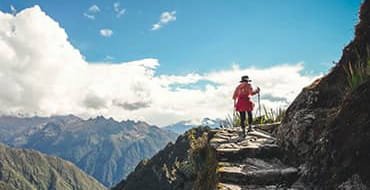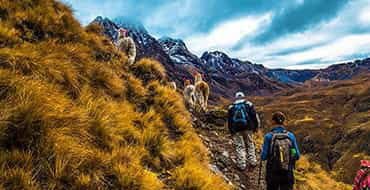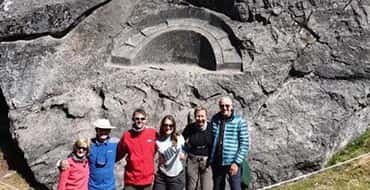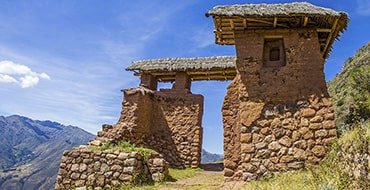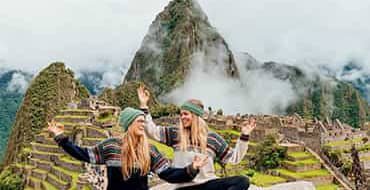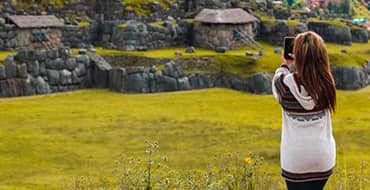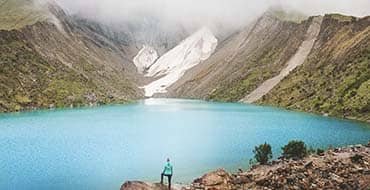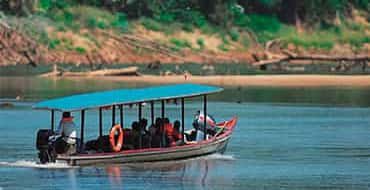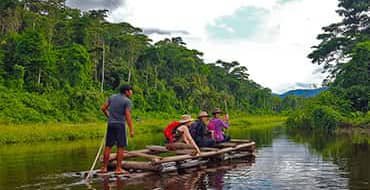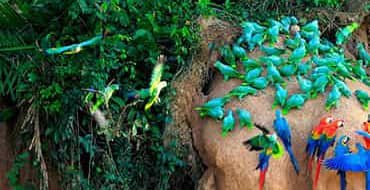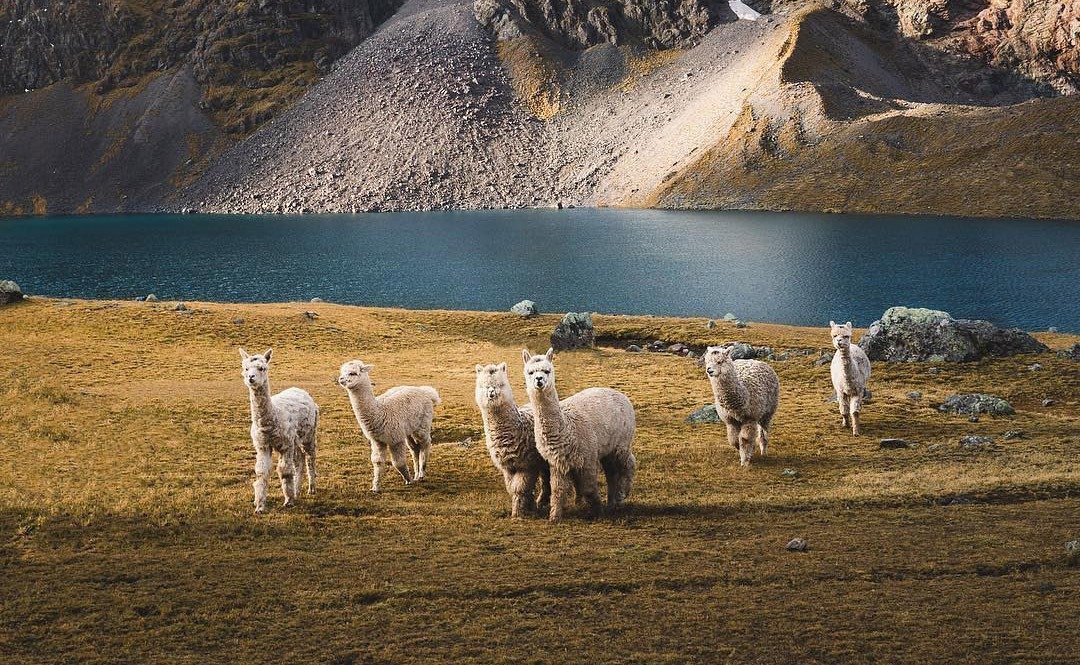
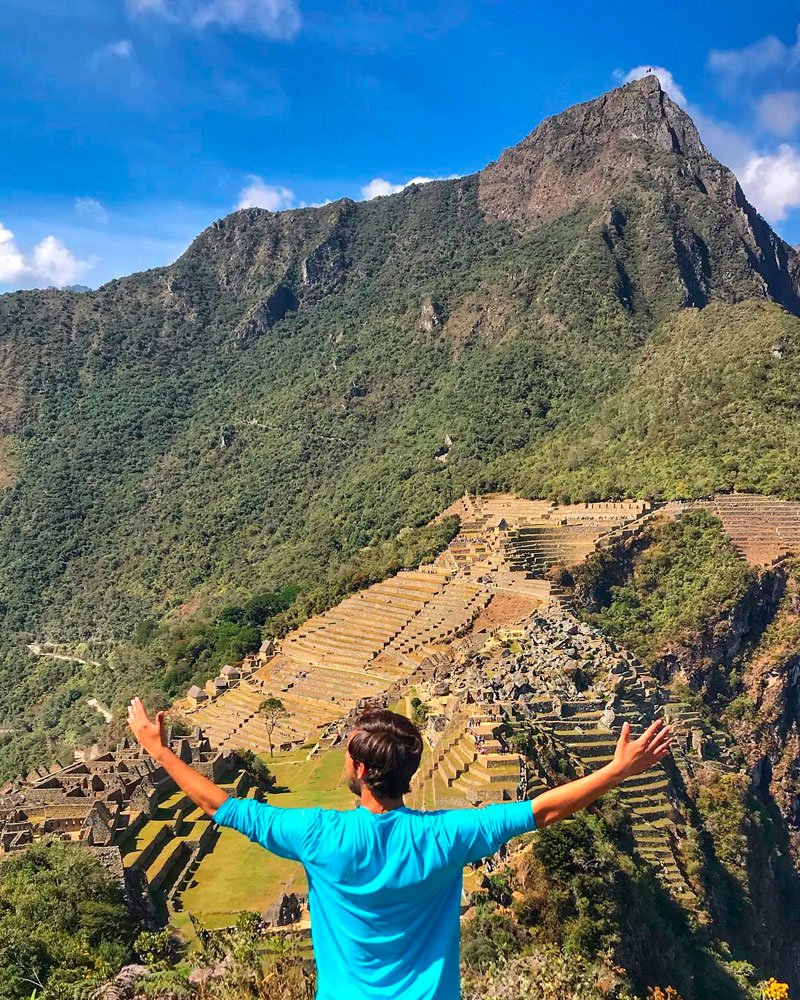
Introduction to Huchuy Picchu
Huchuy Picchu, often overshadowed by its more famous neighbor Machu Picchu, is a small yet captivating peak situated within the same historical sanctuary in Peru. Nestled in the Andes mountains, this modest summit stands at an elevation of approximately 2,497 meters (8,192 feet) above sea level, offering a less crowded but equally enriching experience for those who seek to explore the ancient Incan landscapes.
Geographically, Huchuy Picchu is located just north of the iconic Machu Picchu, forming part of the breathtaking topography that characterizes this UNESCO World Heritage site. The name “Huchuy Picchu” translates to “Little Mountain” in Quechua, aptly describing its smaller stature compared to the towering Huayna Picchu. Despite its size, the peak holds a unique allure due to its relative obscurity and the serene vistas it provides.
The significance of Huchuy Picchu lies not only in its natural beauty but also in its historical and cultural value. The Incan civilization, known for their architectural prowess and deep spiritual connection with nature, left behind remnants of their sophisticated infrastructure on and around this peak. As a result, Huchuy Picchu offers a glimpse into the past, allowing visitors to walk in the footsteps of the ancient Incas.
What makes Huchuy Picchu particularly intriguing is its status as a lesser-known destination. While Machu Picchu and Huayna Picchu attract throngs of tourists year-round, Huchuy Picchu remains a tranquil alternative for hikers and tourists seeking a more intimate encounter with the Andean landscape. The Huchuy Picchu trek is less strenuous than its counterparts, making it accessible to a broader range of adventurers, including those who may not have extensive hiking experience.
For travelers yearning to connect with history and nature without the bustling crowds, Huchuy Picchu presents an unmissable opportunity. Its combination of scenic beauty, cultural heritage, and relative seclusion makes it a hidden gem in the heart of Peru.
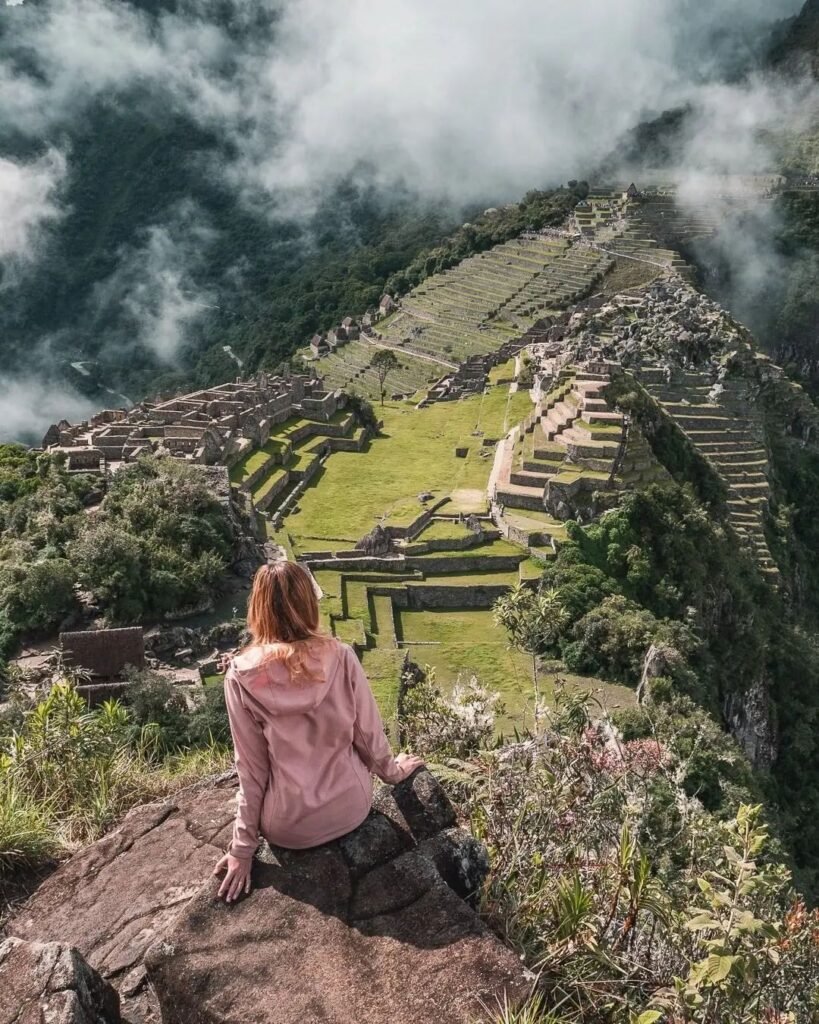
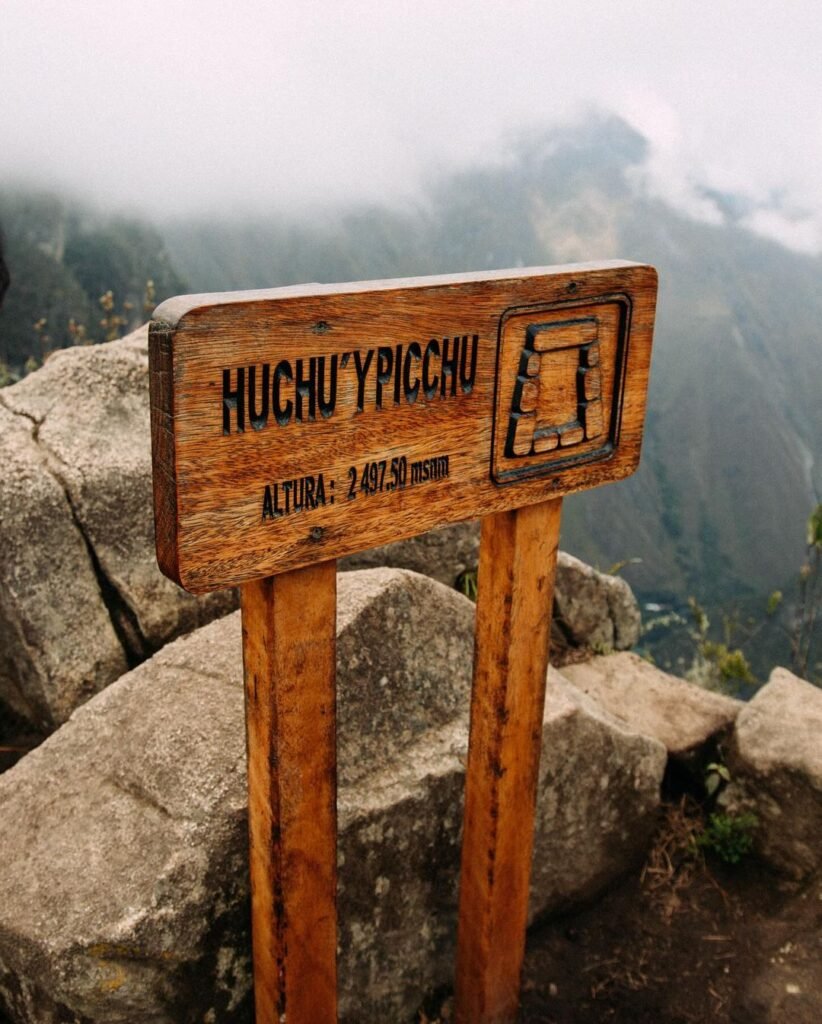
Getting to Huchuy Picchu
Reaching Huchuy Picchu involves a well-coordinated journey that starts from Cusco, the historical heart of Peru. From Cusco, travelers typically embark on a scenic train ride to Aguas Calientes, the gateway to Machu Picchu. There are several train services available, ranging from the luxurious Hiram Bingham to the more budget-friendly Expedition service, ensuring options for various preferences and budgets. The train ride itself is an experience, offering stunning views of the Sacred Valley and the Urubamba River along the way.
Upon arriving in Aguas Calientes, visitors need to take a bus to the entrance of Machu Picchu. These buses run frequently throughout the day and are the most convenient mode of transportation to the site. Tickets for the bus can be purchased in advance or on the spot, though it’s advisable to buy them early to avoid long queues. The bus ride is approximately 30 minutes, winding up the mountain with spectacular views of the surrounding landscapes.
Once at Machu Picchu, reaching the trailhead for Huchuy Picchu requires a bit of planning. Huchuy Picchu is a lesser-known but equally captivating peak located within the Machu Picchu complex. Visitors must secure a specific entry ticket that includes access to both Machu Picchu and Huchuy Picchu. These tickets are limited and should be purchased well in advance, especially during peak tourist seasons. It is important to note that permits are strictly controlled to preserve the site.
The hike to Huchuy Picchu itself is relatively short but steep, making it accessible to those with moderate fitness levels. The trail offers breathtaking views of the Machu Picchu ruins and the surrounding Andean landscape, providing a unique perspective often missed by those who only visit the main site. Adequate preparation, including proper hiking attire and hydration, is essential for a safe and enjoyable trek.

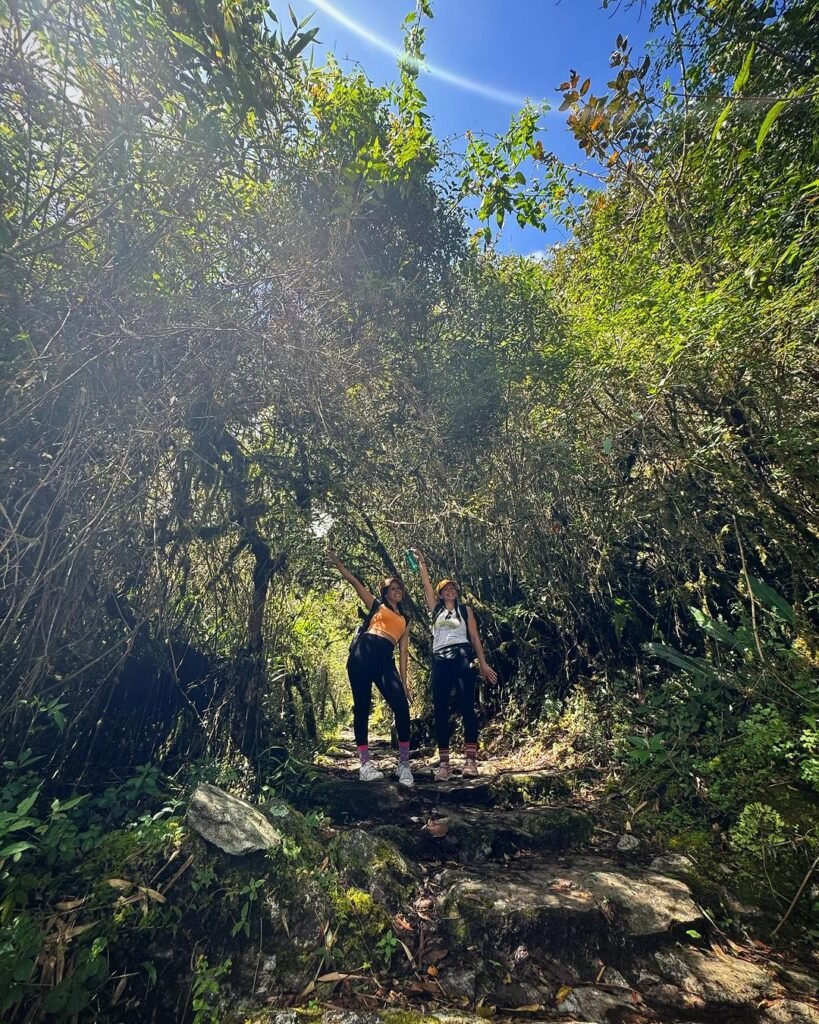
The Hike: What to Expect
The Huchuy Picchu trek offers an exhilarating yet manageable hiking experience, making it a popular choice for adventurers seeking to explore the less crowded trails of the Machu Picchu region. The trail begins with a gradual ascent, which soon transforms into a moderate climb. Hikers can expect a well-maintained path that winds through lush Andean landscapes, offering breathtaking panoramic views at various points.
The difficulty level of the Huchuy Picchu hike is generally considered moderate, suitable for individuals with a reasonable level of fitness. The entire trek typically takes around 2-3 hours to complete, depending on the hiker’s pace and the number of stops made to take in the stunning scenery. Key landmarks along the way include ancient Inca terraces, small ruins, and picturesque viewpoints overlooking the Urubamba River and the surrounding mountains.
Among the scenic spots, the summit of Huchuy Picchu stands out as a highlight. From this vantage point, hikers are rewarded with unparalleled views of the iconic Machu Picchu citadel and the lush valleys below. This spot offers an excellent opportunity for photography and a moment of reflection amidst the serene natural beauty.
When preparing for the Huchuy Picchu tour, it is essential to pack appropriately. Recommended items include sturdy hiking boots, a hat, sunscreen, a rain jacket, and plenty of water. A lightweight backpack to carry snacks and a first-aid kit is also advisable. Given the varying weather conditions in the Andes, layering clothing is a practical approach to stay comfortable throughout the hike.
Safety precautions are paramount during the Huchuy Picchu trek. It is advisable to start the hike early in the morning to avoid the midday heat and to ensure adequate daylight for the return journey. Hikers should stay on marked trails, watch their footing on uneven terrain, and take regular breaks to acclimatize to the altitude. By following these guidelines, adventurers can enjoy a safe and memorable hiking experience on the Huchuy Picchu trail.

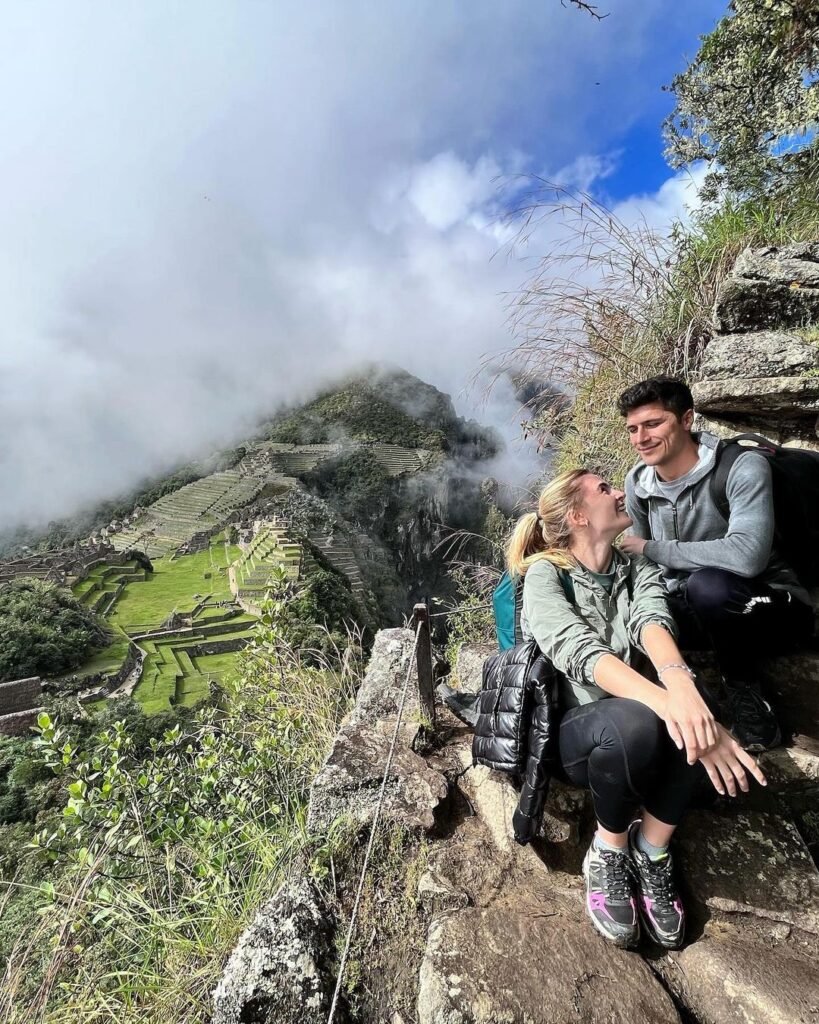
Flora and Fauna of Huchuy Picchu
Nestled within the Andean highlands, the Huchuy Picchu circuit boasts a stunning array of flora and fauna, making it a paradise for nature enthusiasts. The biodiversity of the region is remarkable, characterized by a variety of endemic species that thrive in this unique ecosystem. As hikers embark on the Huchuy Picchu trek, they are greeted by an incredible tapestry of plant life, ranging from lush cloud forests to alpine meadows.
One of the most striking botanical features of the Huchuy Picchu area is the prevalence of Polylepis trees, also known as Queuña. These gnarled trees, with their distinctive flaky bark, are perfectly adapted to the harsh Andean climate and provide essential habitat for a myriad of bird species. Alongside Polylepis forests, hikers may also encounter vibrant orchids and bromeliads, adding splashes of color to the verdant landscape.
The fauna of Huchuy Picchu is equally diverse. Birdwatchers will be delighted to spot the Andean condor soaring overhead, a symbol of the region’s natural heritage. The circuit is also home to a variety of hummingbirds, whose iridescent feathers shimmer in the sunlight as they flit between flowers. For those with keen eyes, sightings of the elusive Andean fox or the playful spectacled bear are possible, adding an element of excitement to the Huchuy Picchu tour.
Amidst this rich tapestry of life, the Huchuy Picchu circuit offers a unique opportunity to see species that are seldom found elsewhere. This biodiversity not only enriches the trekking experience but also underscores the importance of preserving these fragile ecosystems. Whether it’s the striking flora or the captivating fauna, the natural wonders of Huchuy Picchu leave an indelible mark on all who venture into this enchanting landscape.
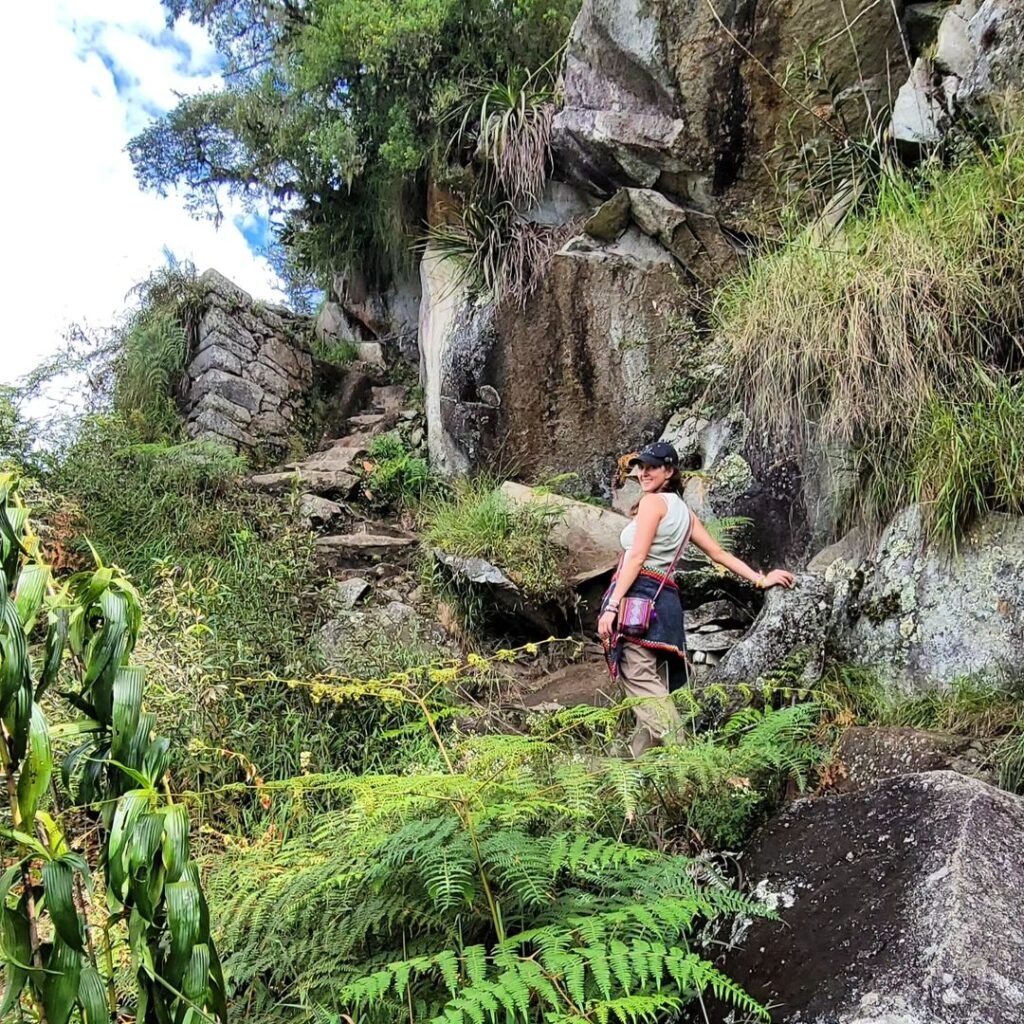

Historical and Cultural Significance
Huchuy Picchu, often overshadowed by its more famous neighbor Machu Picchu, holds a unique position in the rich tapestry of Inca history. This lesser-known peak, whose name translates to “Little Mountain” in Quechua, is an integral part of the broader Inca civilization. The site provides a fascinating glimpse into the architectural ingenuity and religious beliefs of the Incas.
Historically, the Incas were master builders and astronomers, and Huchuy Picchu is a testament to their advanced understanding of engineering and spirituality. The intricate stone pathways and terraces that adorn the mountain are believed to have been used for agricultural purposes and possibly as spiritual or ceremonial sites. These constructions echo the sophisticated techniques seen in other Inca sites, such as Machu Picchu and Sacsayhuamán.
Archaeological findings in the Huchuy Picchu area have uncovered artifacts that further emphasize its significance. Pottery shards, tools, and even remnants of textiles suggest that this site was not merely an extension of Machu Picchu but a vital part of the Inca’s daily and spiritual life. These discoveries shed light on the everyday activities and the ceremonial practices that once took place on the mountain.
Moreover, Huchuy Picchu’s proximity to Machu Picchu suggests a symbolic relationship. Some historians argue that the smaller peak served as a sentinel or a complementary site, enhancing the spiritual ambiance of the grand citadel. It is possible that Huchuy Picchu played a role in the astronomical observations and rituals that were central to Inca cosmology.
The cultural importance of Huchuy Picchu is further enriched by local legends and oral traditions. Stories passed down through generations speak of the mountain as a sacred space, imbued with spiritual energy. These narratives are crucial for understanding the mountain’s role in the spiritual and cultural life of the Incas.
Exploring the Huchuy Picchu trek offers more than just stunning vistas; it provides an immersive journey into the heart of Inca civilization. Each step on this trek is a step back in time, offering a profound connection to the people who once called these mountains home.


Preparing for Your Huchuy Picchu Adventure
Embarking on the Huchuy Picchu trek requires careful preparation to ensure a safe and enjoyable experience. This guide offers practical advice on the necessary gear, fitness preparation, acclimatization to altitude, and the best times of year to visit this remarkable destination.
First and foremost, the right gear is essential for a successful Huchuy Picchu tour. Key items include sturdy hiking boots, moisture-wicking clothing, a hat, sunglasses, and sunscreen to protect against the intense Andean sun. A reliable backpack should carry water, high-energy snacks, a first-aid kit, and a lightweight rain jacket, as the weather can be unpredictable. Trekking poles can also be beneficial, providing extra stability and reducing strain on your knees.
Physical fitness is crucial for tackling the Huchuy Picchu trek. While it is considered one of the less strenuous hikes in the region, it still requires a moderate level of fitness. Engage in regular cardiovascular and strength training exercises in the weeks leading up to your adventure. Activities like hiking, jogging, and cycling can significantly improve your stamina and muscle endurance.
Acclimatization to altitude is another critical factor. Huchuy Picchu sits at an elevation of approximately 2,720 meters (8,924 feet) above sea level. To minimize the risk of altitude sickness, spend a few days in Cusco or the Sacred Valley before your trek. Hydration, a diet rich in carbohydrates, and avoiding alcohol and heavy exertion during the initial days can aid in acclimatization.
Timing your visit is also important. The best months for the Huchuy Picchu trek are between April and October, which correspond to the dry season in the Andean region. During these months, the trails are less muddy, and the weather is generally more predictable, enhancing your overall trekking experience.
By taking these preparations into account, you will be well-equipped to enjoy the breathtaking landscapes and rich cultural heritage that the Huchuy Picchu circuit has to offer.


Photography Tips for Huchuy Picchu
Capturing the majestic beauty of Huchuy Picchu requires a blend of preparation, timing, and technique. To ensure you get the best shots during your Huchuy Picchu trek, consider the following tips.
The optimal time of day for photography is early morning or late afternoon. During these periods, the lighting is softer and more diffused, reducing harsh shadows and highlighting the natural beauty of the landscape. Sunrise and sunset provide a golden hue that can add a magical touch to your photos. Midday light, while bright, can be harsh and may wash out the vibrant colors of the scenery.
When it comes to viewpoints, there are several key spots along the Huchuy Picchu circuit that offer stunning panoramas. The summit provides a 360-degree view that is perfect for wide-angle shots. Other noteworthy spots include the terraces and lookout points that offer unique perspectives of the surrounding valleys and mountains. Be sure to take advantage of these locations to capture the diverse beauty of the area.
Protecting your camera equipment is crucial, especially given the varying weather conditions you might encounter on a Huchuy Picchu tour. Rain and mist are common, so carrying a waterproof bag or cover for your camera is essential. Additionally, a lens cloth can help keep your lens clean from moisture and dust. For those using a DSLR, consider bringing a lens hood to prevent glare and lens flare, which can detract from the quality of your photos.
Lastly, don’t forget to enjoy the experience. While it’s important to capture beautiful images, taking a moment to appreciate the view without the lens can make your Huchuy Picchu trek even more memorable. Balancing photography with the joy of exploration will ensure you leave with not only stunning photos but also cherished memories.


Sustainable Tourism and Conservation Efforts
The Huchuy Picchu trek offers an unparalleled opportunity to explore the natural and cultural richness of the Andean region. However, with this privilege comes the responsibility to preserve the environment and cultural heritage for future generations. Sustainable tourism practices are crucial in maintaining the pristine condition of Huchuy Picchu and its surroundings while ensuring that the local communities benefit from tourism.
One of the primary conservation efforts in the region is the regulation of visitor numbers. By limiting the number of people who can embark on the Huchuy Picchu tour each day, authorities aim to reduce the impact on the trails and archaeological sites. This approach helps prevent erosion, damage to flora, and overcrowding, ensuring that the experience remains intimate and respectful of the environment.
Tourists can also contribute to conservation by adhering to Leave No Trace principles. This includes carrying out all trash, staying on designated paths, and avoiding the disturbance of wildlife and plant life. Additionally, using reusable water bottles and avoiding single-use plastics can significantly reduce waste in the area.
Supporting local conservation projects is another way to engage in responsible travel. Many organizations work tirelessly to protect the biodiversity and cultural heritage of Huchuy Picchu. By participating in or donating to these initiatives, tourists can directly contribute to the preservation efforts. An example of such a project is the reforestation programs that aim to restore native vegetation and provide habitat for local wildlife.
Furthermore, choosing eco-friendly accommodations and tour operators that prioritize sustainability can make a significant difference. Look for businesses that implement water and energy-saving measures, support local communities, and educate tourists on the importance of conservation.
By following these guidelines, visitors can help ensure that the Huchuy Picchu trek remains a beautiful and vibrant destination for years to come. The collective effort of tourists, local communities, and conservation organizations is essential in safeguarding this precious part of Peru’s heritage.
